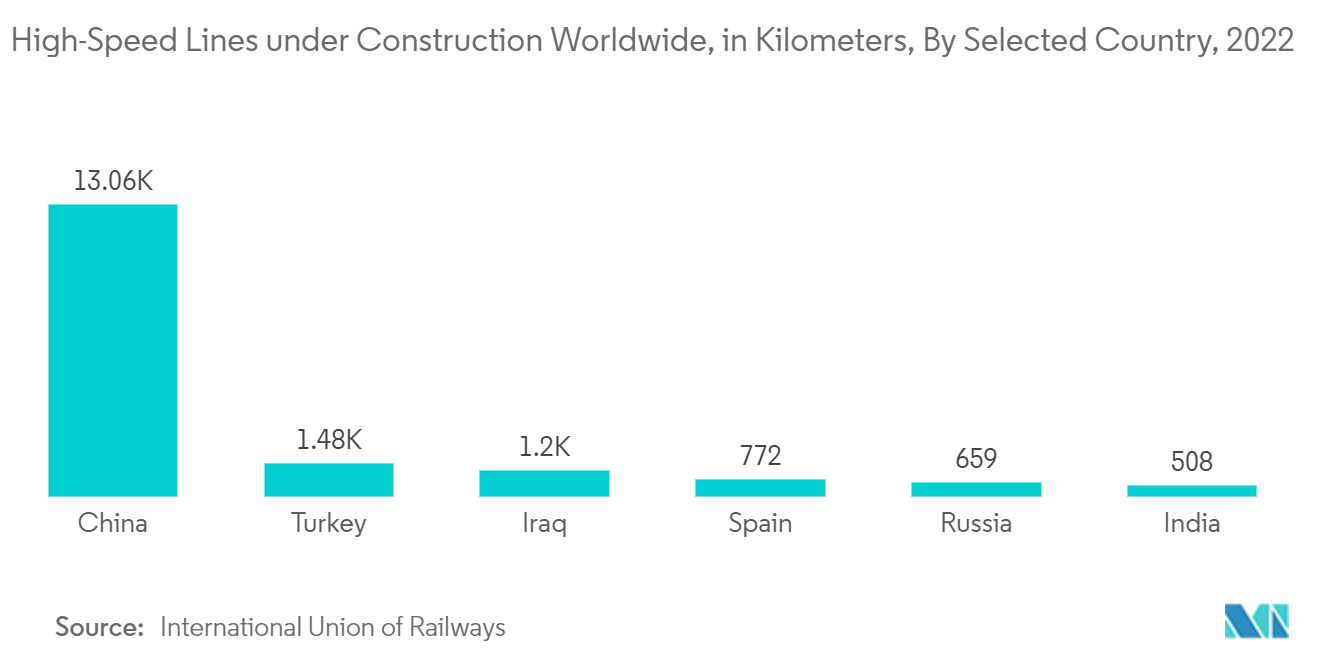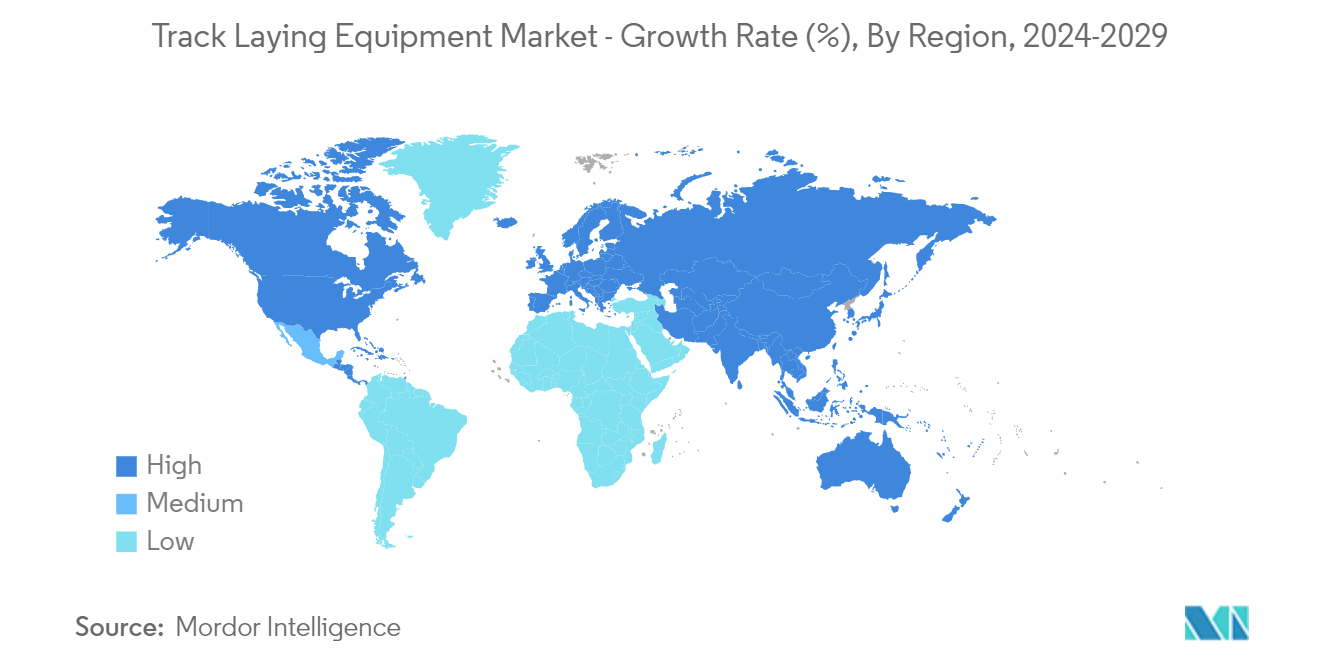Market Trends of Track Laying Equipment Industry
The New Construction Equipment Segment is Dominating the Track-Laying Equipment Market
The new track-laying construction equipment is extensively used to install railway tracks, especially for heavy or urban rail projects. Each piece of equipment is manufactured with an optimum lifting capacity, depending on the project requirement. Due to the high cost of owning track-laying equipment, many authorities enter into a contractual agreement to deploy these machines on-site or rent the equipment for a specified period and a pre-determined rate till the completion of the project.
Therefore, governments worldwide are excessively focusing on enhancing their rail network to cater to the increasing passenger demand. With the influx of rail passengers expected in the coming years, it will become crucial for the governments to expand their existing facilities connecting multiple routes, which, in turn, will positively impact the demand for track-laying equipment. Moreover, the rising emphasis on cross-border activity also fuels the demand, owing to the announcement of multiple rail expansion projects, mainly to cater to the increasing demand for cargo transportation.
- According to the International Union of Railways, China, Turkey, and Iraq were the leading countries worldwide with the highest number of high-speed rail lines under construction as of 2022. The high-speed rail lines under construction in China stood at 13,063 kilometers as of 2022, followed by Turkey with 1,483 kilometers of high-speed rail under construction and Iraq with 1,200 kilometers of high-speed rail under construction pipeline.
- According to the United Kingdom Office of Rail and Road, the national rail passenger journeys in the United Kingdom reached 1,348.8 million in 2022/23 compared to 990.1 million in 2021/22, representing a Y-o-Y growth of 36.2% between 2021/22 and 2022/23.
With the integration of various manufacturers in the ecosystem strategizing to gain a competitive advantage, a price reduction for new track-laying equipment will exist in the coming years. Owing to its multifold advantages, governments worldwide will emphasize deploying this equipment on sites to complete new rail projects seamlessly.
Even though there exists a substantial demand for renewal equipment for maintenance purposes, this segment's demand will supersede that of the other, bolstering the growth of this market segment. Moreover, the market will witness rapid integration of technology such as telematics to ensure that operators can detect malfunctions and perform preventive maintenance before the complete shutdown of these equipment.

Asia-Pacific is Expected to be the Fastest Growing Market Between 2024 and 2029
Asia-Pacific is expected to account for the largest share of the track-laying equipment market owing to the massive investments announced to construct new railway lines, especially in China, India, and Malaysia. Furthermore, the increasing demand for cargo transportation via rail and the consumer's preference to avail of heavy rail transportation services to tackle traffic congestion serve as significant determinants of the demand for track-laying equipment across Asia-Pacific.
- According to the Indian Ministry of Railways, the volume of freight carried by Indian railways touched 1,415.87 million metric tons in 2022 compared to 1,230.94 million metric tons in 2021, recording a Y-o-Y growth of 15.0% between 2021 and 2022.
- Similarly, the value of earnings from rail passenger traffic across India touched USD 7.64 billion in FY 2023 compared to USD 4.98 billion in FY 2022, representing a Y-o-Y growth of 53.4% between FY 2022 and FY 2023.
Moreover, China's aggressive focus on enhancing transportation connectivity between Southeast Asian nations under its Belt and Road Initiatives further propels the demand for the deployment of track-laying equipment. Southeast Asian countries such as Malaysia increasingly prefer to deploy track-laying equipment for railway tracks. Asia-Pacific is also driven by the enhancement of metro services to cater to the increasing consumer demand. Faster project completion and reduced manual workload in these facilities become crucial; therefore, in recent years, governments across Asia-Pacific have preferred deploying advanced machinery at project sites.
- In October 2023, the Indonesian government integrated the 142-kilometer high-speed railway connecting Jakarta with Bandung. The project cost exceeded USD 7.3 billion, which China-funded as part of their Belt and Road Initiative. The project aims to reduce the travel time between these two cities from three hours to less than 40 minutes.
With massive railway projects under the pipeline and the government's increasing focus on improving the existing railway network across Asia-Pacific, a massive demand for track-laying equipment will exist between 2024 and 2029. Various manufacturers operating in the region, such as BEML India and CRRC Corporation Limited, are expected to constantly diversify their product portfolio to suit the project requirements.


